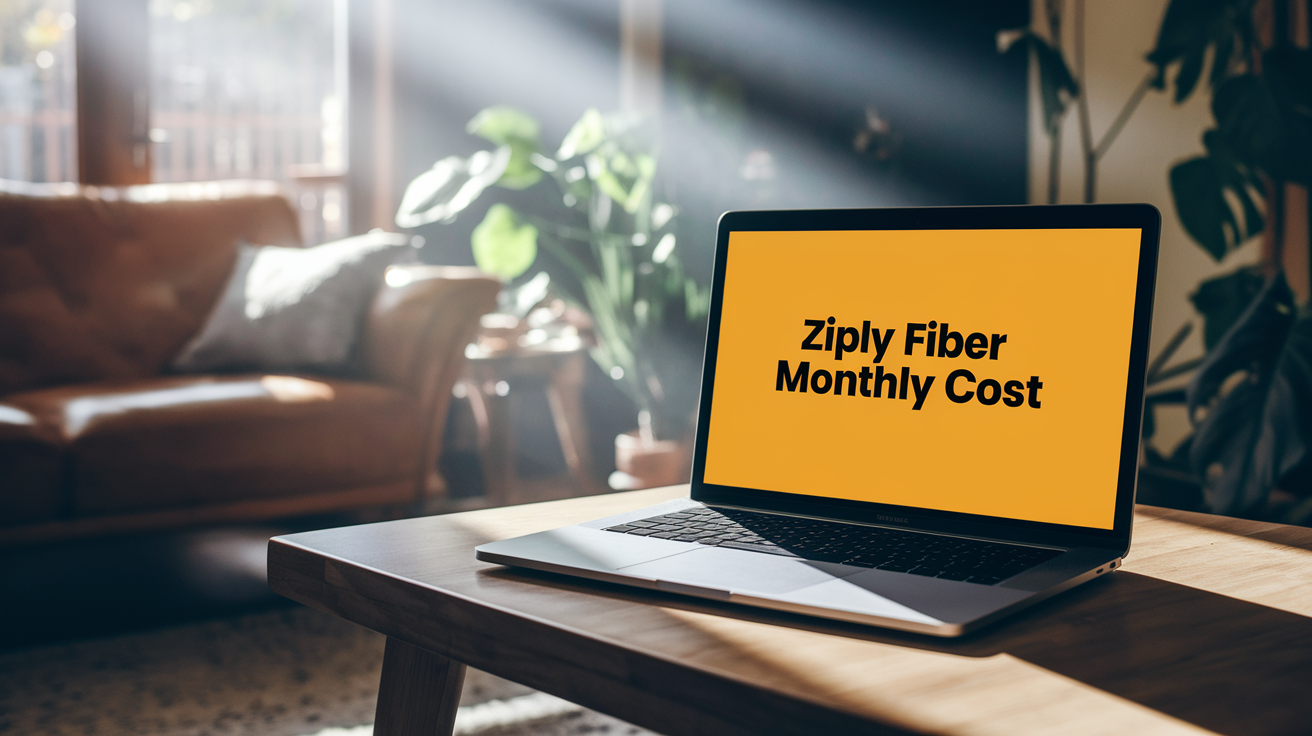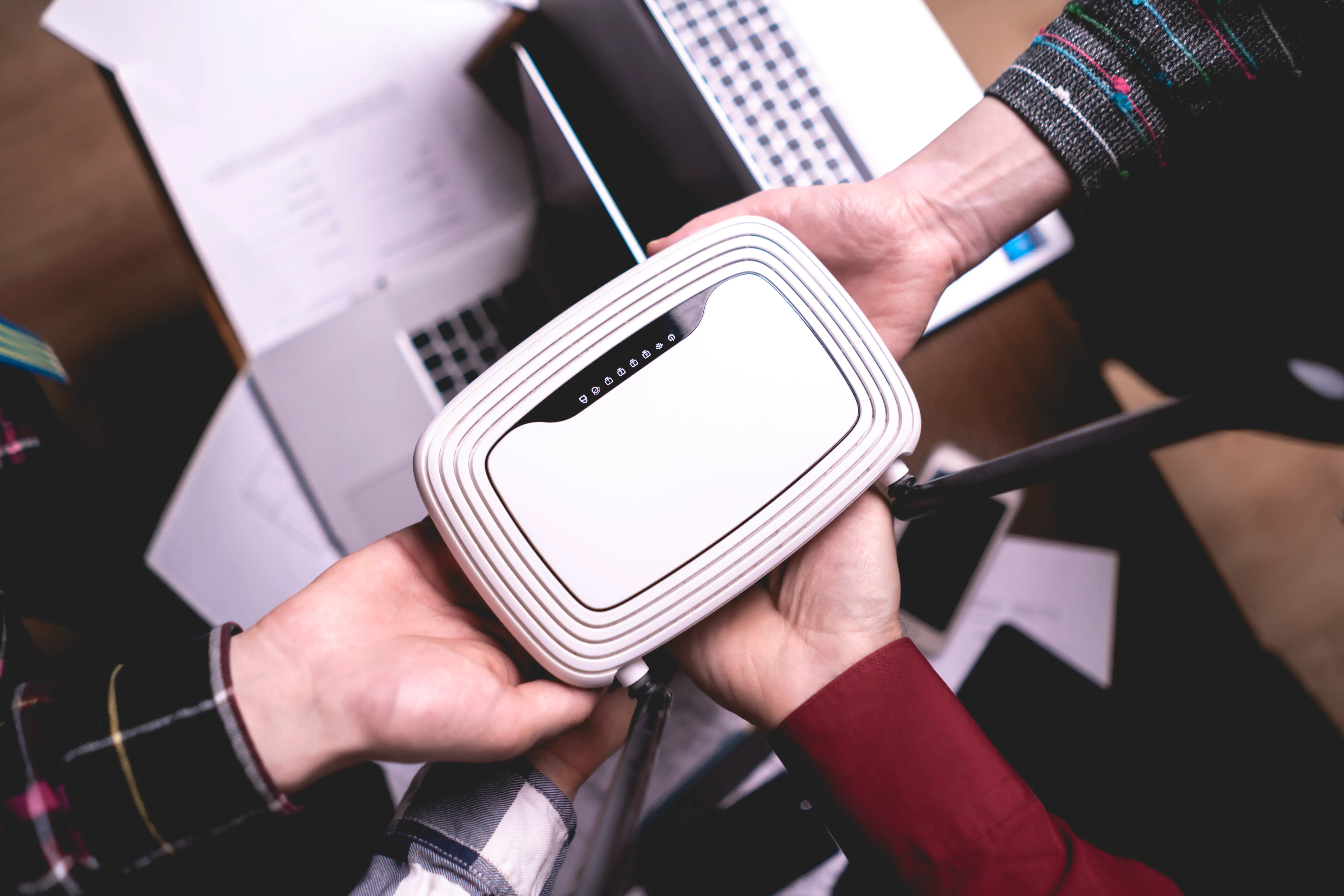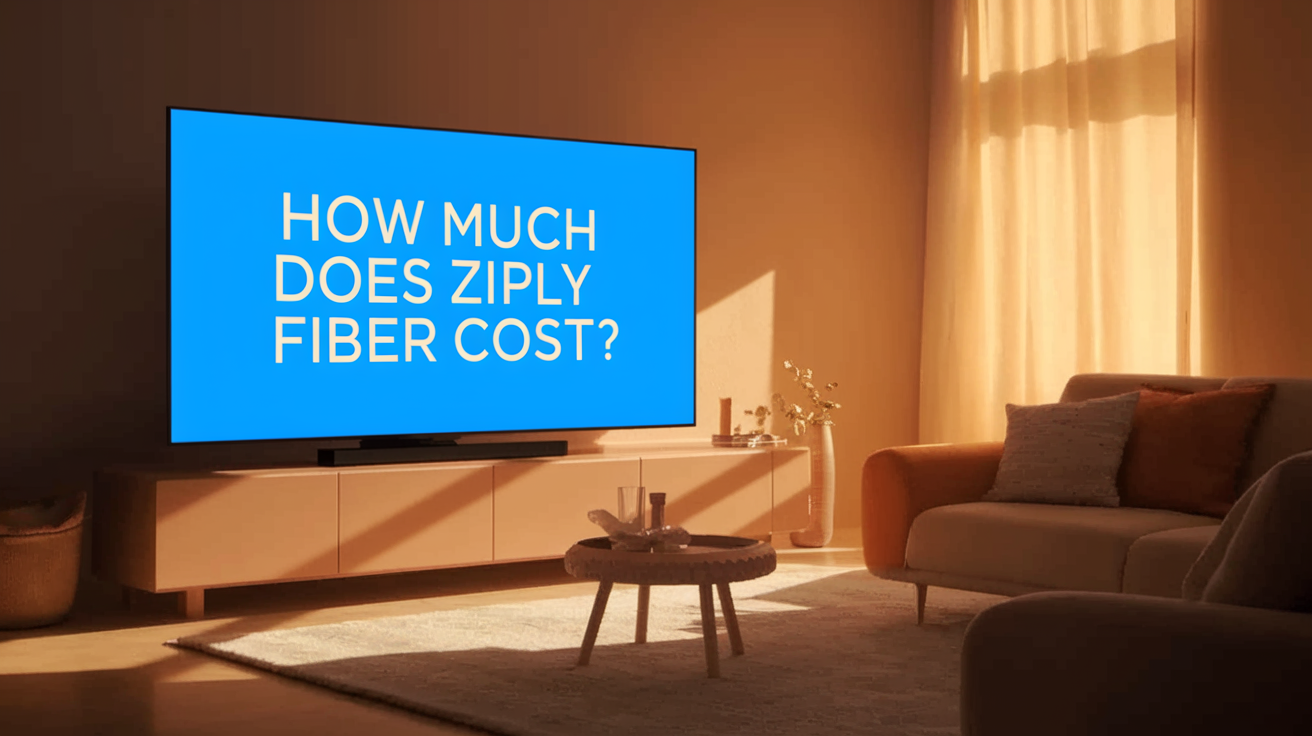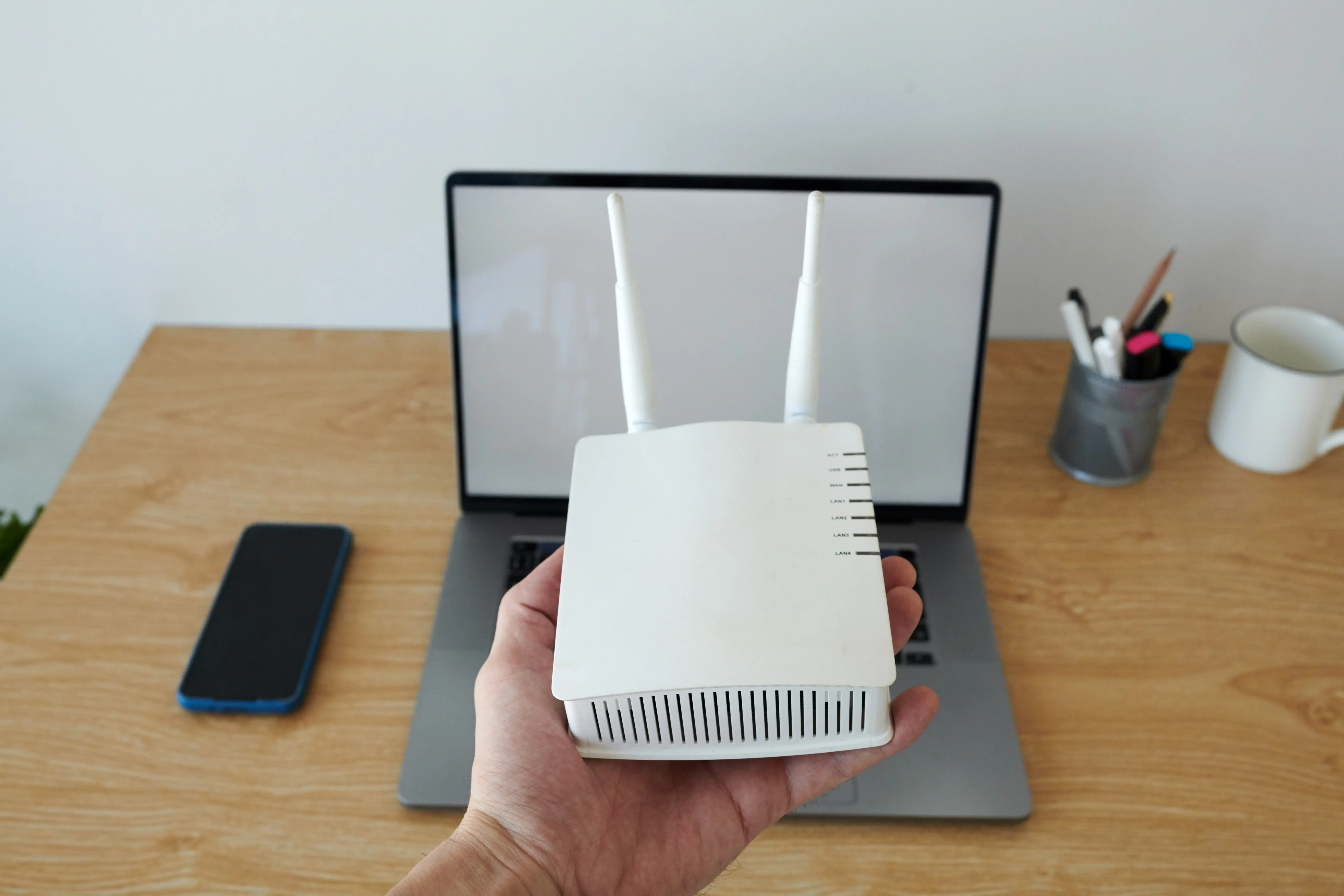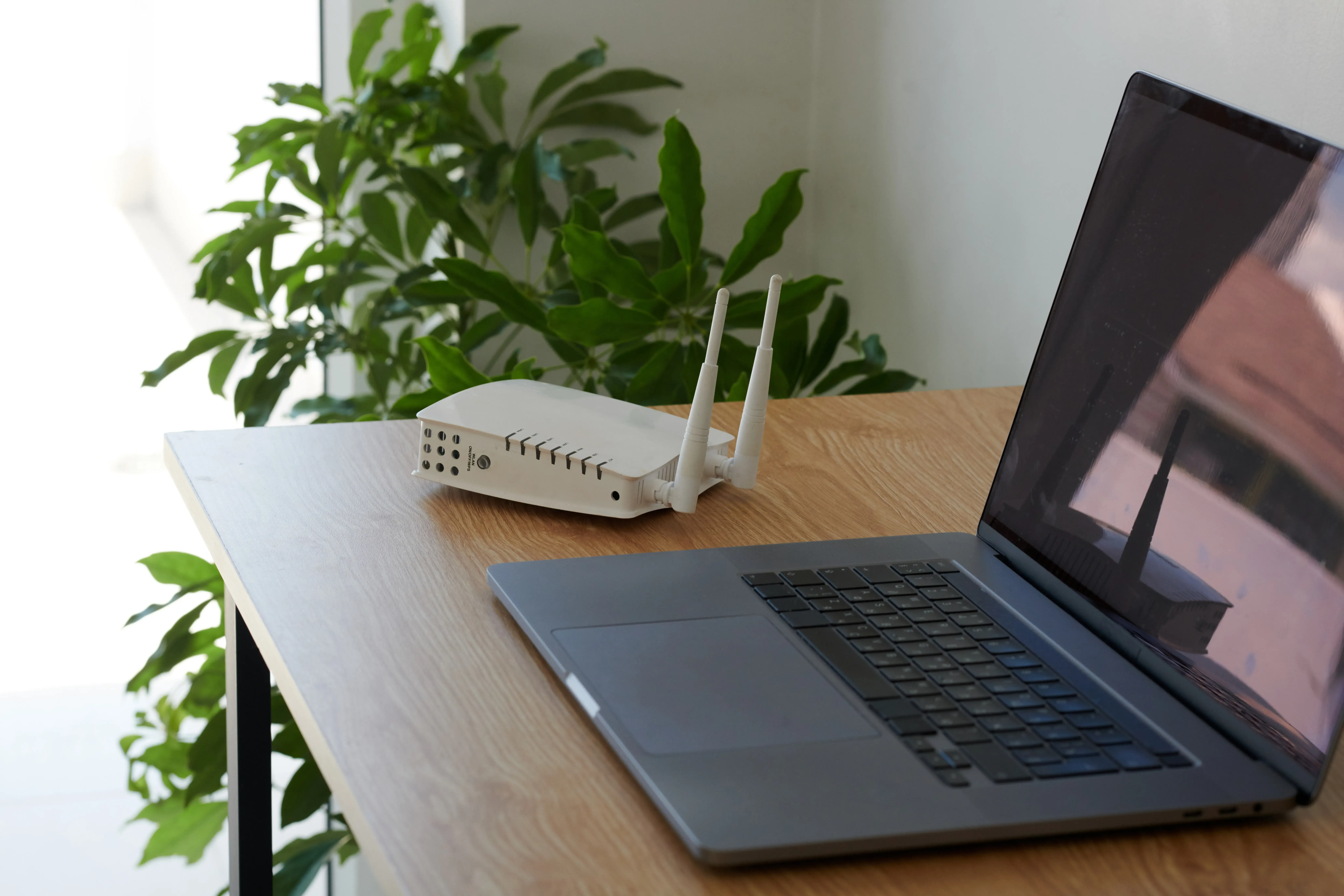Is Ziply Available at my Address?

Finding out if Ziply Fiber is available at your specific address is the crucial first step to unlocking gigabit speeds. This guide provides a comprehensive, step-by-step process to confirm Ziply Fiber availability, ensuring you get the fastest internet possible for your home or business in 2025.
How to Check Ziply Fiber Availability at Your Address
The most direct and accurate way to determine if Ziply Fiber is available at your specific location is by using their official online availability checker. This tool is designed to quickly cross-reference your address with their network infrastructure. Here’s a breakdown of the process:
Step 1: Visit the Official Ziply Fiber Website
Navigate to the official Ziply Fiber website. You can typically find this by searching for "Ziply Fiber" on your preferred search engine or by directly typing their URL into your browser. Look for the homepage, which usually features prominent calls to action related to checking service availability.
Step 2: Locate the Availability Checker
On the Ziply Fiber homepage, you’ll usually find a dedicated section or a prominent button that says something like "Check Availability," "See if Ziply is at Your Address," or "Enter Your Address." This is the gateway to the serviceability tool.
Step 3: Enter Your Full Address
You will be prompted to enter your complete street address, including street name, number, city, state, and zip code. Accuracy is paramount here. Ensure there are no typos or abbreviations that might lead to an incorrect search result. Some systems may also ask for your apartment or unit number if applicable.
Step 4: Submit Your Address
Once you have entered your address details, click the "Submit," "Check," or similar button. The system will then query its database to see if fiber optic infrastructure has been deployed to your specific location.
Step 5: Review the Results
Within moments, the website will display the results. There are a few possible outcomes:
- Available: If Ziply Fiber is available, you will likely see a confirmation message and be presented with available internet plans, speeds, and pricing. You may also be able to proceed directly to signing up for service.
- Coming Soon: In some cases, Ziply Fiber may be actively building out its network in your area but service isn't live yet. The website might indicate that service is "coming soon" and potentially offer a way to sign up for notifications when it becomes available.
- Not Available: If Ziply Fiber does not currently serve your address, the checker will inform you of this. The reasons for this can vary and are often related to infrastructure limitations or strategic deployment plans.
Alternative Methods for Checking Availability
While the online checker is the most efficient, you might also consider these options if you encounter issues or prefer direct interaction:
- Phone Support: Ziply Fiber typically offers a customer service phone line. You can call them directly and provide your address to a representative who can check availability for you. This can be helpful if you have complex questions or prefer speaking with a human.
- Local Retailers (Less Common): In some areas, Ziply might partner with local electronics stores or service providers. However, this is less common for fiber internet compared to traditional cable or DSL.
It's always best to start with the official website's availability checker, as it's the most up-to-date and accurate source of information. For instance, if you are looking to upgrade your internet service in a new town and suspect fiber might be an option, using the Ziply availability tool first is a smart move.
Understanding Ziply Fiber's Coverage: What You Need to Know
Ziply Fiber is a relatively new player in the telecommunications market, primarily focusing on delivering fiber-to-the-premise (FTTP) internet. Unlike older technologies that might have broader, albeit slower, coverage, fiber optic networks require significant infrastructure investment. This means Ziply's availability is more localized and dependent on specific build-out projects.
Fiber-to-the-Premise (FTTP) Explained
FTTP is the gold standard for internet connectivity. It means that a fiber optic cable runs directly from Ziply's network all the way to your home or business. This direct connection is what enables the incredibly high speeds and reliable performance associated with fiber internet. It bypasses the limitations of older technologies like DSL (which uses copper phone lines) or cable (which shares bandwidth among many users).
Ziply's Strategic Focus
Ziply Fiber's strategy often involves acquiring existing fiber networks from other providers or investing in new deployments in underserved or overlooked markets. They are particularly active in the Pacific Northwest and parts of the Midwest. This targeted approach means that even within a state, availability can vary dramatically from one town to the next, or even one neighborhood to another.
The Importance of the Address Check
Because of this targeted deployment, simply knowing that Ziply operates in a state or region is not enough. The availability checker is indispensable because it accesses real-time data on where their fiber lines have been physically installed and activated. This is why a precise address lookup is the only reliable method to confirm serviceability.
2025 Coverage Trends
In 2025, Ziply Fiber continues its aggressive expansion. The company has publicly stated its commitment to bringing gigabit speeds to more communities. However, the pace of expansion is dictated by several factors, including regulatory approvals, construction timelines, and the economic viability of serving specific areas. For example, while a large city might have multiple providers, Ziply might focus on suburban or even rural areas where fiber is a significant upgrade over existing options.
What "Available" Really Means
When the availability checker says "Available," it signifies that the physical fiber optic infrastructure is present at your address and ready for connection. This typically means you can order service and schedule an installation. If it says "Coming Soon," it implies that construction is underway or planned, and you might be able to pre-register or be notified when service launches. "Not Available" means there is currently no active fiber deployment to your location.
Factors Influencing Ziply Fiber Availability
Several key elements determine whether Ziply Fiber can offer service at a particular address. Understanding these factors can provide context for the availability results you receive and shed light on why some areas have fiber while others do not.
Infrastructure Deployment and Investment
The primary factor is the physical presence of Ziply's fiber optic network. Laying fiber optic cable is a capital-intensive undertaking. It involves digging trenches, installing conduits, and running cables underground or overhead. Ziply invests in areas where they project a strong demand and a reasonable return on investment. This often means prioritizing areas with a significant number of potential customers who would benefit from high-speed internet.
Previous Network Acquisitions
Ziply Fiber has grown significantly by acquiring existing fiber networks from other telecommunications companies. For example, their expansion in the Pacific Northwest has included acquiring assets from Frontier Communications. If your address was previously served by a fiber network that Ziply acquired, it's highly likely to be available. However, the integration process can sometimes take time, so an address check is still crucial.
New Build-Out Projects
Beyond acquisitions, Ziply actively engages in new build-out projects. These projects can be initiated by Ziply itself or in partnership with municipalities or local governments. These new builds are what expand Ziply's footprint into new towns and neighborhoods. The timeline for these projects can vary significantly, from a few months to over a year, depending on the scale and complexity.
Local Regulations and Permitting
The process of deploying new infrastructure is often subject to local regulations, zoning laws, and permitting requirements. Obtaining the necessary permits to dig and install cables can sometimes cause delays. Ziply works with local authorities to navigate these processes, but it's an inherent part of expanding their network. Areas with streamlined permitting processes might see faster deployment.
Competition and Market Saturation
While Ziply aims to bring fiber to as many homes as possible, market dynamics can also play a role. In areas already saturated with high-speed internet options from multiple providers, Ziply might prioritize areas with fewer competitive choices or where their fiber offering represents a substantial technological leap over existing services.
Density of Potential Customers
Fiber optic deployment is generally more cost-effective in densely populated areas. Running fiber to a single home in a very rural setting can be prohibitively expensive compared to serving a block of apartments or a neighborhood with many houses. This is why you might see Ziply available in suburban areas before reaching very remote rural locations, although they do have initiatives aimed at rural broadband expansion.
Address Data Accuracy
The accuracy of the address data used by Ziply's availability checker is critical. Sometimes, minor discrepancies in how an address is listed in postal records versus how it's mapped by Ziply can lead to incorrect availability results. If you believe your address should be serviceable but the checker says otherwise, contacting Ziply support directly might be necessary.
Ziply Fiber Service Areas in 2025: Where Are They Expanding?
As of 2025, Ziply Fiber continues to be a significant force in the fiber internet landscape, particularly in the regions where it has established a strong presence. The company's expansion strategy is multifaceted, focusing on both deepening its existing network and entering new markets. Understanding their general service areas can give you a preliminary idea of potential availability.
Core Markets: The Pacific Northwest
Ziply Fiber's most extensive footprint remains in the Pacific Northwest. This includes:
- Washington: Ziply has a substantial presence across Washington state, serving major metropolitan areas like Seattle and Spokane, as well as numerous smaller towns and communities. Their network here often includes both acquired infrastructure and new builds.
- Oregon: Similar to Washington, Oregon is a key state for Ziply, with service available in Portland and its surrounding suburbs, as well as in many other cities and rural areas.
- Idaho: Ziply is actively deploying fiber in Idaho, with a notable presence in Boise and surrounding communities.
- Montana: Ziply has been expanding its fiber network in Montana, bringing high-speed options to communities that may have previously lacked robust internet infrastructure.
Expansion into the Midwest
In recent years, Ziply Fiber has made significant inroads into the Midwest, acquiring and building out networks in several states. Key areas include:
- Illinois: Ziply is actively building and expanding its fiber network in various parts of Illinois, including suburban Chicago and other communities.
- Minnesota: The company has been investing in fiber infrastructure in Minnesota, aiming to bring gigabit speeds to more residents.
- Wisconsin: Ziply's presence in Wisconsin is growing, with deployments in several cities and towns.
- Iowa: Ziply is also making moves in Iowa, extending its fiber reach to more households and businesses.
Ongoing Network Builds and Future Plans
Ziply Fiber is not static; they are continuously working on new network builds. These projects are often announced through press releases or local government partnerships. The company's stated mission is to bring fiber to communities that have been underserved by traditional providers. This means that even if your town isn't listed as a current core market, it might be on their radar for future expansion.
How to Stay Updated on New Areas
The best way to know if Ziply is coming to your specific area is to:
- Regularly check the Ziply Fiber website: Their availability checker is updated in real-time.
- Sign up for email notifications: If your address is not yet available but is marked as "coming soon," Ziply often offers an option to be notified when service launches.
- Follow Ziply Fiber news: Keep an eye on their official press releases and news sections for announcements about new market entries and expansion projects.
For example, if you live in a town in Ohio that previously only had DSL or cable, and Ziply announces a new build there in 2025, you'll want to use their availability checker as soon as the project nears completion.
Comparing Ziply Fiber to Other Internet Providers
When considering internet service, it's essential to compare Ziply Fiber with other providers available in your area. This comparison helps you understand the value proposition, potential speeds, and pricing you can expect. The key differentiator for Ziply is its commitment to fiber-to-the-premise (FTTP) technology.
Ziply Fiber vs. Cable Internet (e.g., Xfinity, Spectrum)
Cable internet providers use coaxial cable infrastructure, which was originally designed for cable television. While they offer high speeds, these speeds are often shared bandwidth, meaning performance can degrade during peak usage hours when many neighbors are online. Ziply's FTTP offers dedicated bandwidth, leading to more consistent and often higher symmetrical speeds (upload and download speeds are the same).
Key Differences:
- Speed: Ziply typically offers higher and more consistent symmetrical speeds (e.g., 1 Gbps download and 1 Gbps upload). Cable providers might offer high download speeds (e.g., 1 Gbps download) but significantly lower upload speeds (e.g., 30-50 Mbps upload).
- Reliability: Fiber is generally more reliable and less susceptible to interference than cable.
- Pricing: Pricing can vary, but fiber providers are increasingly competitive, especially when considering the symmetrical speeds offered.
Ziply Fiber vs. DSL Internet (e.g., CenturyLink, AT&T DSL)
DSL internet uses existing copper telephone lines. This technology is older and significantly slower than fiber. Speeds decrease the farther you are from the local exchange. Ziply's fiber offers a dramatic upgrade over DSL.
Key Differences:
- Speed: DSL speeds are typically much lower, ranging from 10 Mbps to 100 Mbps download, with very low upload speeds. Ziply's entry-level fiber plans often start at 100 Mbps or 300 Mbps and go up to gigabit speeds.
- Technology: Fiber optic cables are superior to copper in transmitting data.
- Future-Proofing: Fiber is the future of internet connectivity, capable of much higher speeds than DSL can ever achieve.
Ziply Fiber vs. Other Fiber Providers (e.g., Google Fiber, Verizon Fios)
When comparing Ziply to other fiber providers, the primary differences often lie in their geographic coverage areas, specific plan offerings, pricing, and customer service reputations. In areas where multiple fiber providers are present, the choice might come down to the best deal or the most convenient installation process.
Comparison Points:
- Coverage: Each fiber provider has its own specific service areas. Ziply's strength is in the Pacific Northwest and expanding Midwest. Verizon Fios is strong on the East Coast, and Google Fiber has specific city rollouts.
- Plans and Pricing: Compare the advertised speeds, data caps (though fiber is often unlimited), equipment fees, and contract requirements.
- Customer Service: Online reviews and customer satisfaction ratings can provide insights into the support experience.
Example Comparison Table (Hypothetical for 2025)
This table illustrates a hypothetical comparison of internet plans available in a specific area in 2025. Actual offerings will vary.
| Provider | Technology | Download Speed | Upload Speed | Estimated Price (Monthly) | Availability Check |
|---|---|---|---|---|---|
| Ziply Fiber | Fiber | 1 Gbps | 1 Gbps | $80 | Check Now |
| CableCo Provider A | Cable | 1 Gbps | 35 Mbps | $90 | Check Website A |
| DSL Provider B | DSL | 100 Mbps | 10 Mbps | $70 | Check Website B |
Note: Prices and speeds are illustrative and subject to change. Always verify current offers directly with providers.
The key takeaway is that if Ziply Fiber is available at your address, it likely represents a significant upgrade in speed, consistency, and reliability compared to non-fiber options. The availability checker remains your definitive tool to confirm this.
What to Do If Ziply Fiber Isn't Available at Your Address
Discovering that Ziply Fiber is not currently available at your address can be disappointing, especially if you're eager for the benefits of fiber optic internet. However, this doesn't mean you're out of options. There are several proactive steps you can take to explore alternatives or to stay informed about future Ziply availability.
1. Explore Other Providers
The first and most practical step is to investigate what other internet service providers (ISPs) operate in your area. Use online comparison tools or visit the websites of major ISPs known to serve your region. You might find that another fiber provider is available, or that a high-speed cable or even fixed wireless option meets your needs.
- Check major national providers: Companies like Xfinity, Spectrum, AT&T, and Verizon often have extensive networks.
- Look for regional providers: Smaller, regional ISPs might offer competitive services, especially in areas where national providers are less prevalent.
- Consider fixed wireless: In some rural or semi-rural areas, fixed wireless internet can offer speeds comparable to cable, though it relies on line-of-sight to a tower.
2. Sign Up for Ziply Fiber Notifications
If the availability checker indicates that Ziply Fiber is "coming soon" to your address, or even if it says "not available" but you're in a general area where they are expanding, sign up for their notification service. Most ISPs offer a way to register your address and receive an email or text alert when service becomes available. This is a passive but effective way to be among the first to know.
On the Ziply Fiber website, after checking your address, if it's not available, look for an option like "Get Notified" or "Request Service." This ensures you don't have to keep checking manually.
3. Advocate for Fiber Expansion
In some communities, the demand for better internet can influence ISP investment. You can express your interest in Ziply Fiber or fiber internet in general to your local government officials. Many municipalities are actively working to attract broadband providers or even invest in municipal broadband networks. Your voice, along with those of your neighbors, can make a difference.
- Contact your city council or mayor's office.
- Participate in local town hall meetings regarding infrastructure.
- Encourage your neighbors to also express interest.
4. Re-check Availability Periodically
Infrastructure projects take time. Ziply Fiber's network is constantly growing. It's a good idea to re-check your address availability every few months, especially if you know there are ongoing construction projects in your area. You might be surprised to find that service has become available since your last check.
5. Understand the "Why"
If Ziply Fiber is not available, it's usually due to the high cost and complexity of deploying fiber optic networks. Factors like the distance from existing infrastructure, the density of potential customers, and local permitting processes all play a role. Understanding these challenges can help set expectations.
6. Consider a Temporary Solution
While waiting for fiber or exploring other options, ensure you have a reliable internet connection for your current needs. This might involve a higher-tier cable plan, a business internet solution if applicable, or even a mobile hotspot plan for essential tasks. The goal is to maintain connectivity while pursuing better long-term solutions.
For example, if you live in a newly developing suburban area where Ziply hasn't reached yet, but your neighbor a few blocks away has it, you should definitely sign up for notifications and check back regularly. In the meantime, you might opt for a fast cable plan from a provider like Xfinity if it's available, while keeping Ziply as your ideal future upgrade.
The Advantages of Choosing Ziply Fiber
If Ziply Fiber is available at your address, you're in a prime position to benefit from one of the most advanced internet technologies available today. Fiber optic internet, particularly Ziply's FTTP implementation, offers a host of advantages that can significantly enhance your online experience. Here are the key benefits:
1. Unparalleled Speeds
Ziply Fiber is renowned for offering gigabit (1000 Mbps) and multi-gigabit speeds. This means you can download large files, stream high-definition or 4K video content, and participate in video conferences without buffering or lag. For households with multiple users and devices, these speeds ensure everyone can use the internet simultaneously without impacting performance.
2. Symmetrical Upload and Download Speeds
A critical advantage of Ziply Fiber is its symmetrical speed offering. Unlike cable or DSL, where upload speeds are often a fraction of download speeds, Ziply typically provides the same high speed for both uploading and downloading. This is crucial for activities like:
- Video Conferencing: Ensures clear, stable video and audio for remote work and online classes.
- Cloud Backups: Allows you to upload large files to cloud storage services quickly.
- Content Creation: Essential for uploading videos, photos, and other media to platforms like YouTube, Instagram, or Twitch.
- Online Gaming: Reduces latency and improves responsiveness.
3. Superior Reliability and Stability
Fiber optic cables are made of glass and are less susceptible to environmental interference (like electromagnetic interference from power lines or weather conditions) than copper cables used in DSL or coaxial cables used in cable internet. This translates to a more stable and reliable connection, with fewer outages and consistent performance.
4. Low Latency
Latency, or ping, is the time it takes for data to travel from your device to a server and back. Fiber optic networks have significantly lower latency compared to other technologies. This is particularly important for real-time applications such as online gaming, live streaming, and video calls, where even small delays can be noticeable and disruptive.
5. Future-Proof Technology
Fiber optic technology has a much higher capacity for data transmission than existing copper or coaxial cable networks. This means it can easily support future increases in internet speed demands without requiring a complete overhaul of the physical infrastructure. Investing in fiber now means you're prepared for the internet of tomorrow.
6. Enhanced Home Network Capabilities
With gigabit speeds, you can more effectively utilize the full potential of your home network. This includes supporting multiple smart home devices, high-resolution streaming on several TVs simultaneously, and seamless operation of bandwidth-intensive applications without bottlenecks.
7. Potential for Cost Savings
While upfront costs might seem comparable, the superior performance and reliability of fiber can lead to long-term value. For businesses, faster and more reliable internet can translate to increased productivity and reduced downtime. For households, the ability to stream and connect without issues can improve overall satisfaction.
For instance, a family that relies heavily on remote work and online schooling in 2025 will find Ziply's symmetrical gigabit speeds invaluable. Uploading large project files for school or work will be as fast as downloading them, eliminating a common frustration with other internet types. This seamless experience is the hallmark of a true fiber connection.
Frequently Asked Questions About Ziply Availability
Here are answers to common questions regarding Ziply Fiber availability at your address.
Q1: How quickly can I get Ziply Fiber installed after checking availability?
Once you confirm Ziply Fiber is available at your address and you sign up for a plan, installation timelines can vary. Typically, installation can be scheduled within a few days to a couple of weeks, depending on technician availability and the complexity of the installation at your home. Some installations might be quicker if no new wiring is needed.
Q2: Does Ziply Fiber require a contract?
Ziply Fiber generally offers month-to-month service without long-term contracts for its residential internet plans. This provides flexibility for customers. Always verify the terms and conditions at the time of signup, as offers can change.
Q3: What if my address shows as unavailable, but my neighbor has Ziply Fiber?
This can happen due to slight discrepancies in address mapping or infrastructure deployment. The best course of action is to contact Ziply Fiber's customer support directly. Provide them with your exact address and your neighbor's address, and they can investigate further to determine if service can indeed be extended to your location.
Q4: Are there any hidden fees with Ziply Fiber?
Ziply Fiber aims for transparency. While there are standard costs for the internet service itself, installation fees may apply depending on the service plan and current promotions. Equipment rental fees (for the modem/router) might also be part of the package, or you may have the option to use your own compatible equipment. It's essential to review the full breakdown of costs during the signup process.
Q5: Can I check availability for a business address?
Yes, Ziply Fiber offers business internet services, and their availability checker should be able to determine serviceability for commercial addresses as well. Business plans often have different features and support structures compared to residential plans.
Q6: What kind of equipment does Ziply Fiber provide?
Ziply Fiber typically provides a high-performance router/modem combo unit that is optimized for their fiber network. This equipment is designed to deliver the advertised speeds throughout your home. You may have the option to use your own router if it meets their specifications.
Q7: How does Ziply Fiber's availability compare to other providers in 2025?
In 2025, Ziply Fiber is a significant provider of fiber internet, especially in the Pacific Northwest and expanding into the Midwest. Their availability is tied to their specific fiber network build-outs. While national cable providers like Xfinity and Spectrum have broader coverage, Ziply offers a superior fiber experience where available. DSL providers like AT&T and CenturyLink may have wider reach but offer much lower speeds.
Q8: What are the benefits of fiber internet over cable or DSL?
Fiber internet offers significantly faster and more consistent speeds, especially symmetrical upload and download speeds, lower latency, and greater reliability. It's less prone to interference and is considered the future-proof technology for high-speed internet connectivity.
By understanding these common questions, you can navigate the process of checking Ziply Fiber availability and making an informed decision about your internet service.
Conclusion
Determining Ziply Fiber availability at your address is a straightforward yet critical step in securing high-speed, reliable internet. The primary method, utilizing Ziply's official online availability checker, provides the most accurate and up-to-date information. By inputting your precise address, you can quickly ascertain if their advanced fiber optic network has reached your home or business.
Understanding the factors influencing availability—such as infrastructure investment, network acquisitions, and local development—provides valuable context. Ziply Fiber's strategic focus on the Pacific Northwest and expanding Midwest markets in 2025 means that while coverage is growing, it remains geographically specific. If Ziply is not yet available, exploring alternative providers, signing up for future service notifications, and advocating for broadband expansion are proactive measures you can take.
The benefits of choosing Ziply Fiber, if available, are substantial: unparalleled symmetrical speeds, superior reliability, and low latency, all powered by future-proof fiber technology. These advantages translate to a significantly enhanced online experience for work, entertainment, and communication. Therefore, always begin your quest for next-generation internet by checking Ziply's availability at your specific address.
